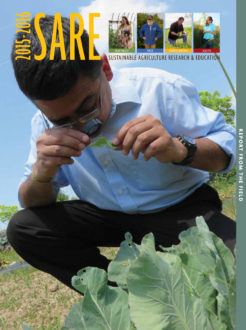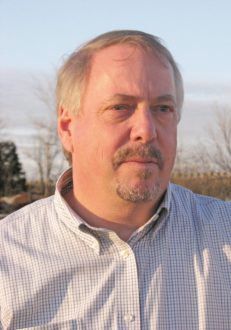Letter from the Director
It is a pleasure to share this report, which offers a small sample of the excellent work supported by the SARE program in each of our four regions. This work spans the country, from all 50 states to the far reaches of the Pacific and Caribbean territories, and it includes topics that advance the core components of sustainable agriculture: productivity, profitability, environmental stewardship and quality of life.
As you read these stories, I encourage you to take note of the people, the processes and the partnerships that have contributed to their success. Each project begins with a person who has an idea. Whether it is a farmer, a rancher, a graduate student, a scientist or an educator, they develop that idea into a proposal for potential funding from their regional SARE program.
Each proposal undergoes competitive review. Proposals are evaluated for their originality, quality of the project design, potential contribution to sustainable agriculture and relevancy to regional needs. A new feature of this report summarizes the number of proposals received and funded in each of our grant programs. You will see that we receive many more proposals than we can fund, so each year we must tell many worthy applicants that SARE cannot fund their idea.
This review process is strengthened because it draws on multiple partners. These include the land grant universities that work with USDA National Institute of Food and Agriculture (NIFA) to host the regional SARE programs and administer the review process. It draws on technical reviewers with professional experience to evaluate the originality and design of projects. It also involves regional Administrative Councils, which include farmers, ranchers, scientists, educators, nonprofit organizations, and federal and state agencies from throughout the region. These councils make the final decision about which proposals will contribute most to building sustainable agricultural systems in their region.
SARE partnerships also go far beyond the proposal review process. Many SARE projects engage multiple partners to get the job done. For example, in this report you will read how the USDA Natural Resources Conservation Service (NRCS) has improved technical outreach to organic farmers in a project that involved collaboration with multiple nonprofit organizations (see p. 11).
Another example is the long-standing partnership between SARE and the National Association of County Agricultural Agents (NACAA). This partnership helps provide the best sustainable agriculture training possible for agricultural agents across the country. These agents are on the front lines to provide farmers and ranchers with applied agricultural training and information. See page 20 of this report to learn more.
I would like to close with a note about SARE’s initiative to provide graduate students a unique training and career-development opportunity. As of 2015, SARE has awarded over 500 Graduate Student grants to help develop our next generation of agricultural scientists. Take for example Felipe Barrios Masias, whose story is in this report (see p. 10). Barrios Masias, now an assistant professor of sustainable horticulture at the University of Nevada Reno, credits the SARE Graduate Student grant he received with helping his career, and now he encourages other students to pursue this opportunity. The enthusiasm that graduate student grantees like Barrios Masias have for their projects, for sustainable agriculture and for the SARE program promises us a bright future.
SARE Director

